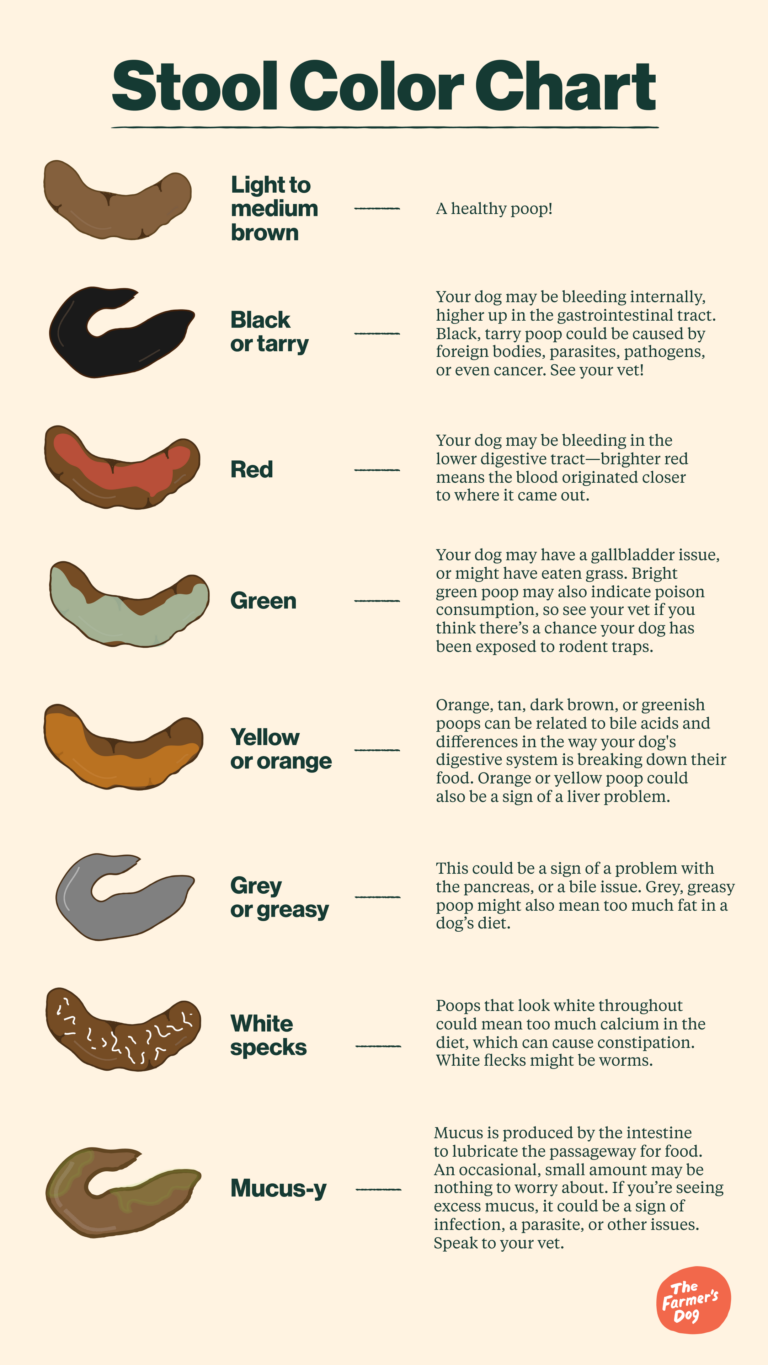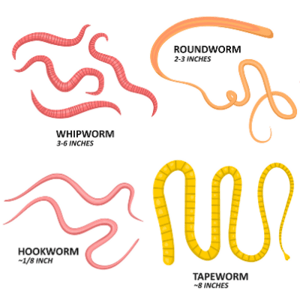Have you ever noticed something unusual in your dog’s poop and wondered, “What do worms look like in dog poop?” It can be worrying to see anything that doesn’t seem right. Identifying worms early is important for your dog’s health and happiness.
You’ll learn exactly what to look for, how to recognize common types of worms, and what steps to take if you spot them. Keep reading to protect your furry friend and keep your home safe.
Identifying Worms In Dog Poop
Noticing worms in your dog’s poop can be unsettling, but recognizing them early helps protect your pet’s health. Identifying the types and characteristics of these worms allows you to take prompt action and consult your vet with accurate information. Let’s look closely at what you should watch for when inspecting dog poop for worms.
Common Types Of Worms Found
Different worms appear in dog poop, but some are more common than others. Roundwormsoften look like small, white spaghetti strands. Tapewormsappear as tiny, rice-like segments that may move and break off in the stool.
Hookwormsare usually too small to see easily, but sometimes appear as thin, white or pale worms. Whipwormsare slender and whip-like but are rarely visible without microscopic examination. Knowing these common types helps you identify what you might be dealing with.
Physical Characteristics To Notice
Look closely at the size, shape, and movement of worms in the poop. Roundworms can be up to several inches long and are cylindrical, while tapeworm segments are flat and oval-shaped.
Sometimes worms may be wriggling or moving, which is a clear sign of their presence. Dead worms or segments might appear dried out or brittle. If you spot anything unusual, take a photo to show your vet—it can make diagnosis quicker and easier.
Color And Texture Clues
Worms found in dog poop vary in color from white to cream, sometimes with a slight yellow tint. Tapeworm segments often look like tiny white grains of rice, but they can darken if dried out.
The texture of the poop itself can give clues, too. Mucus or blood mixed with worms or segments often signals an infection or irritation. Has your dog’s stool changed in consistency or smell? These clues are just as important as spotting worms themselves.

Credit: www.reddit.com
Symptoms Indicating Worm Infestation
Noticing worms in your dog’s poop can be alarming, but often the first clues come from changes in your dog’s body and behavior before you see anything. Recognizing symptoms early helps you take quick action to protect your pet’s health. Keep an eye out for signs that might indicate a worm infestation so you can address the problem promptly.
Changes In Dog’s Behavior
Your dog might act differently if worms are present. You may see increased scratching around the rear, restlessness, or unusual licking of the anus. Sometimes, dogs become more tired or lose interest in playing and eating.
Have you noticed your dog seeming more irritable or lethargic lately? These subtle changes can point to discomfort caused by worms. Paying attention to behavior can alert you before physical signs show up.
Visible Signs In Stool
Worms or worm segments are sometimes visible in your dog’s poop. They may look like small white grains of rice or tiny spaghetti strands. Occasionally, you might spot whole worms, which vary in color from white to brown.
Check for unusual textures or colors in the stool as well. Mucus, blood, or a very loose stool can also suggest a worm problem. If you see anything odd, save a sample for your vet.
Health Issues Linked To Worms
Worm infestations can cause several health problems for your dog. Weight loss despite a normal appetite, vomiting, and diarrhea are common symptoms. In severe cases, worms can lead to anemia or a swollen belly.
Has your dog’s coat lost its shine or become dull? Worms can affect nutrient absorption, impacting overall health. Regular vet checks can catch these issues early and keep your dog feeling their best.
How Worms Appear At Different Stages
Worms in dog poop appear in various forms during their life cycle. Identifying these stages helps spot infections early. Their size, shape, and visibility change as they grow. Understanding these differences aids pet owners and vets alike.
Eggs And Larvae In Feces
Worm eggs are tiny and often invisible without a microscope. They look like small dots or grains in the stool. Larvae may hatch inside the feces or the dog’s intestines. These young worms are thin, white, and may wiggle slightly. Eggs and larvae are usually harder to see with the naked eye.
Adult Worm Appearance
Adult worms are more noticeable in dog poop. They resemble small, white or cream-colored spaghetti strands. Some are flat and ribbon-like, while others are round and cylindrical. Occasionally, segments of tapeworms appear, looking like small rice grains. These worms can move slowly and may be seen near the stool’s surface.
Size Variations Among Worm Species
Different worm species vary in size and shape. Roundworms can grow several inches long and look thick. Hookworms are smaller and thinner, often under an inch. Tapeworms are segmented and can reach lengths over a foot. Size depends on the worm’s species and stage of growth.
Preventing And Managing Worm Infections
Worm infections in dogs can be unsettling, especially when you spot them in your pet’s poop. Preventing and managing these infections is crucial to keep your furry friend healthy and happy. Understanding the right steps to take can make a significant difference in controlling and avoiding worm infestations.
Regular Deworming Practices
Deworming your dog on a regular schedule is one of the most effective ways to prevent worm infections. Many vets recommend deworming puppies every two weeks until they are three months old, then monthly until six months. After that, a routine every three to six months works well for most adult dogs.
Keep a deworming calendar or set reminders on your phone. This simple habit helps you avoid missed doses. You might be surprised how often owners forget this easy step, leading to unnecessary health issues.
Hygiene And Environmental Control
Worm eggs and larvae thrive in dirty environments. Cleaning up your dog’s poop immediately helps reduce the risk of reinfection. Wash your hands thoroughly after handling your dog’s waste or soil where your dog plays.
Consider where your dog spends time—regularly clean bedding, toys, and living areas. Avoid letting your dog eat soil, garbage, or raw meat, as these can be sources of worm eggs. How often do you check your dog’s play areas for cleanliness?
When To Consult A Veterinarian
If you notice worms in your dog’s poop or any symptoms like diarrhea, weight loss, or a dull coat, it’s time to see a vet. Early diagnosis can prevent serious health problems. Your vet can identify the type of worm and recommend the most effective treatment.
Don’t wait for symptoms to appear—regular check-ups can catch infections early. Have you scheduled your dog’s next vet visit yet? It might be the best step to ensure your dog stays worm-free.
Collecting And Inspecting Dog Poop Safely
Collecting and inspecting dog poop can reveal important health clues about your pet. Doing this safely protects you and others from germs and parasites. Use clean tools and careful methods to avoid contact with harmful bacteria.
Tools And Techniques For Collection
- Wear disposable gloves to keep your hands clean.
- Use a plastic bag or poop scooper to pick up waste.
- Place the poop in a sealed container or bag for inspection.
- Wash your hands thoroughly after collection, even if gloves were used.
- Choose a well-lit area for better visibility during inspection.
What To Look For During Inspection
- Check for small, white worm-like shapes in the poop.
- Look for any movement or wriggling, which indicates live worms.
- Note the size and color of any parasites found.
- Observe the texture and smell of the stool for abnormalities.
- Take photos to show your vet if you find suspicious signs.
Disposal Tips To Avoid Spread
- Seal the dog poop tightly in a plastic bag before disposal.
- Throw the sealed bag into a designated pet waste bin.
- Do not compost dog poop or throw it in garden soil.
- Clean tools and surfaces with disinfectant after use.
- Keep children and other pets away from the area until cleaned.

Credit: www.reddit.com

Credit: www.thefarmersdog.com
Frequently Asked Questions
What Do Tapeworms Look Like In Dog Poop?
Tapeworms appear as small, white, rice-like segments in dog poop. They often move and can break apart easily. These segments indicate an intestinal parasite infection that requires veterinary treatment.
How Can I Spot Roundworms In My Dog’s Stool?
Roundworms look like spaghetti or thin white worms in dog poop. They can be several inches long and are usually visible to the naked eye. Their presence signals a common worm infection needing prompt vet care.
Are Hookworms Visible In Dog Feces?
Hookworms are tiny and rarely seen in dog poop. They are thin, thread-like worms that mostly remain inside the intestines. Diagnosis usually requires a vet’s fecal test, as hookworms cause anemia and illness.
Can I See Whipworms In My Dog’s Stool?
Whipworms are small and whip-shaped but rarely visible in dog poop. They live deep in the intestines, so detection relies on lab fecal exams. Whipworm infections cause diarrhea and require vet-prescribed medication.
Conclusion
Spotting worms in your dog’s poop is concerning. It’s vital to act quickly. Early detection aids in effective treatment. Regular vet visits can help prevent this issue. Always maintain good hygiene for your furry friend. Clean up after them and wash hands thoroughly.
Monitor your dog’s health closely. Watch for changes in behavior or appetite. These may signal problems. Remember, a healthy dog is a happy dog. With proper care, worms can be managed. Keep your pet safe and comfortable. Your dog deserves the best care possible.
Stay informed and proactive for your pet’s well-being.

